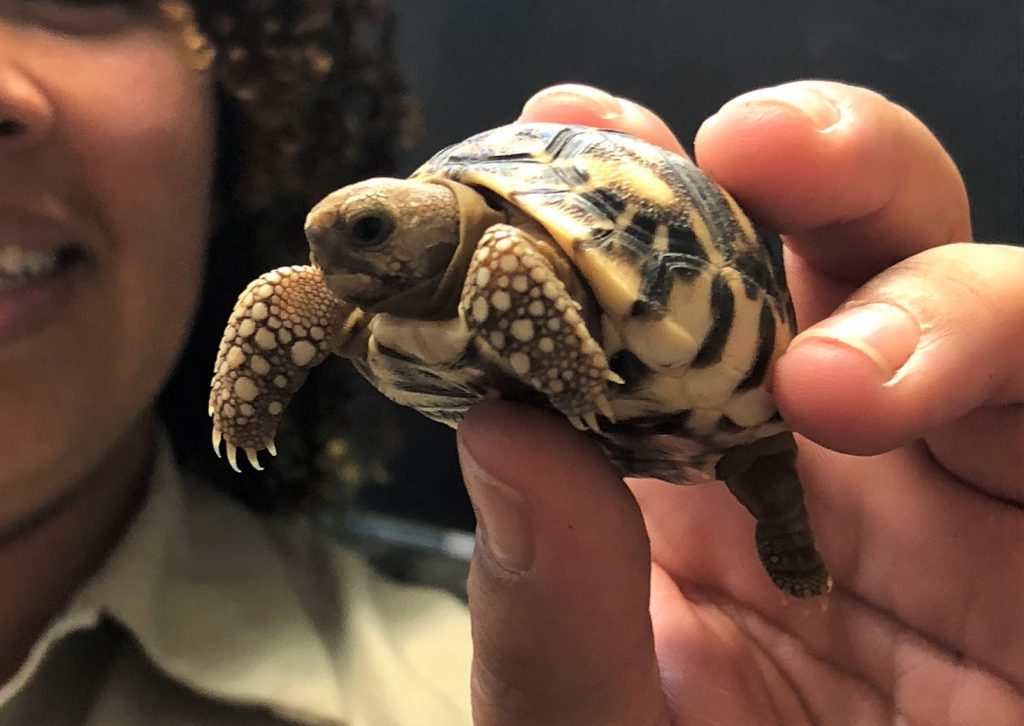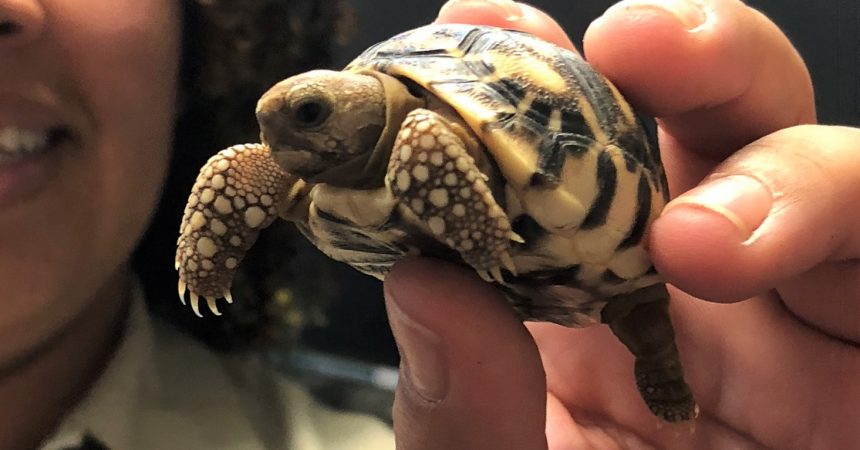Zoo InternQuest is a seven-week career exploration program for San Diego County high school juniors and seniors. Students have the unique opportunity to meet professionals working for the San Diego Zoo, Safari Park, and Institute for Conservation Research, learn about their jobs, and then blog about their experience online. Follow their adventures here on the Zoo’s website.
 On Wednesday, October 17, InternQuest took a tour of the Reptile House and learned about the Zoo’s many conservation efforts involving reptiles. During the tour, our presenter, Rachael Walton who is a Senior Reptile keeper, was open to questions. Ms. Walton described a majority of the animals that are being kept in the reptile house, and gave us a brief description of their situation in the wild and how the Zoo is helping. She introduced us to many of the different conservation projects that the San Diego Zoo is currently involved in.
On Wednesday, October 17, InternQuest took a tour of the Reptile House and learned about the Zoo’s many conservation efforts involving reptiles. During the tour, our presenter, Rachael Walton who is a Senior Reptile keeper, was open to questions. Ms. Walton described a majority of the animals that are being kept in the reptile house, and gave us a brief description of their situation in the wild and how the Zoo is helping. She introduced us to many of the different conservation projects that the San Diego Zoo is currently involved in.
There are many different foundations and projects outside of the San Diego Zoo that are helping endangered species, such as the radiated tortoise. She told us a story of how she and many others had saved over 1,000 radiated tortoises from an abandoned mansion in Madagascar. According to Ms. Walton, it was believed that these tortoises were being housed in preparation for being sold to the black market for either bush meat or the illegal pet trade. However, this story has a happy ending. Working in partnership with the Turtle Survival Alliance, the San Diego Zoo was able to rescue, rehabilitate and release many of the endangered radiated tortoises that were being stored in the house.
After learning all about the Zoo’s conservation efforts with the Burmese Star tortoise, Ms. Walton led us into a corridor housing a variety of venomous species. One of the species that Ms. Walton focused on was a subspecies of mountain viper, the Mang Mountain pit viper, which is native to the Chinese mountains. Mang Mountain pit vipers are critically endangered, and unfortunately, remain largely unheard of by the general public. However, even though this species of snake isn’t well known, they share the same habitat with a very popular species– the giant panda. Given that the giant panda is so well-known and beloved by many, its habitat is heavily protected, which is something Mang Mountain pit vipers benefit from as well. Fortunately, these vipers have started to make a comeback and their population count is rising. While this might not be the intended result, any success in conservation is just that, a success.
One of the first species that we were introduced to was the caiman lizard. This relatively large lizard, is found in Central and South America and was formerly farmed and used for lizard skin handbags around the world. While this species of lizard is not endangered, they do have an important story to tell in regards to the illegal pet trade and wildlife trafficking. Martin, a caiman lizard used as an animal ambassador, is helping his species by educating Zoo guests about his wild counterparts, and even, endangered species that share his same habitat. By fostering connections with reptile ambassadors, this helps people understand that reptiles are important members of their respective ecosystems.
While many species of reptiles are endangered worldwide, there are so many things you can do to help reptiles everyday. For instance, one of the most important things you can do is spread the word that reptiles aren’t creepy and slimy, and in fact, they are incredibly important to global ecosystems. Reptiles act as pest control by keeping down rodent populations, which in turn, helps to control harmful diseases that rodents may carry. Additionally, you can donate to the Zoo’s Wildlife Conservancy, which helps support many of the Zoo’s global conservation efforts. There are many ways for people to help, you just have to get out there and make the difference.
Ben, Conservation Team
Week Three, Fall Session 2018.


